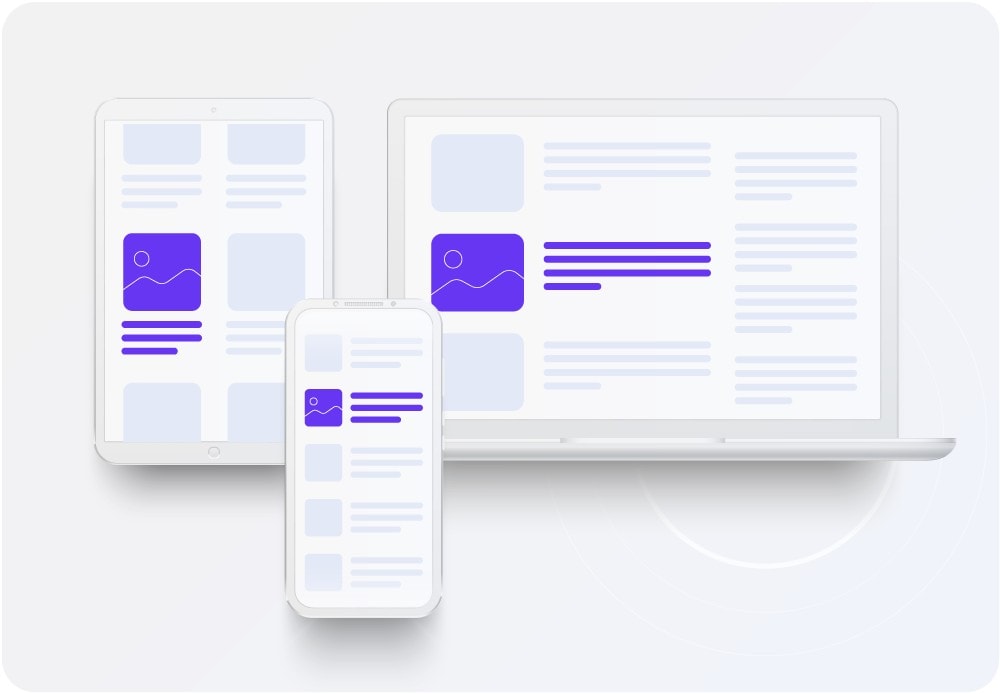As we broke it down for you a while back, native advertising is constantly proving itself as the most compelling way to engage with online audiences. Native advertisements match the surrounding, functionality, and nature of the media format it appears in.
Whether it’s in-feed, search, publisher produced, social, or recommended content, a native ad is eventually going to show up on a particular device as a result of the many programmatic solutions out there. The question that lingers: which device type is better to advertise on? To answer that let’s take a look at the idea behind multiple advertising options.

Digital Advertising is Here to Stay
Billions of people spend most of their time online pursuing a variety of activities – that’s a given. That alone poses enormous potential for advertisers. If you’ve ever used your smartphone to do something more than just take calls, you know what we’re talking about.
Looking for that one perfect brand of boots browsing the Web, you’ve gotta find the best option out there! Whenever or whatever people are browsing, their device becomes a candy land of opportunity for you– the advertiser. And as any advertiser seeking to succeed in native, you too should base your advertising strategy on both channels, utilizing the importance of mobile marketing and the possibilities of desktop-based ads. That is why it’s crucial to understand the difference between them and make sure your ads are optimized to suit both device types.
Ok, So What’s Cooking?
In a world where people are engaging more and more with social media on a daily basis, it is commonly believed that the chances of an individual viewing an ad on a smartphone or a tablet are far greater than on any other device. Nowadays, mobile devices are practically glued to our hands. While you can debate whether or not this is good for society, it’s undoubtedly a terrific opportunity for the native niche to thrive.
IAB Internet Advertising Revenue Report 2018 clearly states that:
Advertising delivered on a mobile device now makes up 65.1% of total internet advertising revenue. Mobile advertising revenue grew to 40% from 2017 to 2018.”.
The idea of combining the non-disruptive nature of native advertising along with a mobile or desktop landscape can create very promising outcomes.

What Makes Native Mobile Advertising So Great?
The answer is – the simplicity of native ad integration into mobile feeds.
Mobile advertising serves ads on smartphones and tablets, devices further characterized by their wireless connection. This type of advertising can take the form of a banner ad embedded either in downloaded apps, mobile games, mobile websites, or text ads via SMS. All of those are optimized to fit into a smaller screening area of mobile devices.
Due to numerous programmatic solutions, mobile advertising can be enhanced with the geographical location of the user, the device’s browsing history, and the individual’s purchasing habits. So there you have it, mobile advertising is part of a bigger picture known as mobile marketing and is therefore one of many tools that should be used in a successful marketing campaign.
In the mobile world context is pretty much everything. Who sees the ad? Where? How many times? Shooting impressions into the void is no longer considered a good strategy. Quality over quantity is what you should be aiming for. In other words, mobile advertising helps you reach the relevant audience and increases the chances of high ROI from the very beginning.
Online users spend approximately 89% of their browsing time running apps, making that the place for your ads to be consistently viewed. Be smart and use geo-targeting to pinpoint your campaigns, increase reach precision, and deliver location-based ads while saving some $$.
Let’s face it, apps and social media platforms have become brand new communication channels and what better way to reach your audience than to do it via their personal mobile devices?
Base your tailored targeting on valuable data included in a unique ID assigned to each mobile device and understand customers’ online habits through analysis – and then make the necessary retargeting adjustments. How about stepping up your creativity game and taking advantage of various apps, social media, and mobile web integration options while designing your ads? Tracking softwares like Voluum (which is integrated with Appsflyer for mobile tracking) will help you determine which channels, audiences, creatives and more are most profitable and which traffic sources that you are paying for are delivering the most conversions.
The Pros are piling up. Let’s sum up then.
Advantages of Native Mobile Advertising
- Native ads blend in perfectly with the content of the editorial flow which leads to a high acceptance rate resulting in much higher click rates.
- Mobile advertising integrates perfectly with the current trends of digital marketing and mobile devices reliance.
- Possibility of direct user response – call-to-clicks.
- High engagement rates.
- Geo-targeting.
- Accessibility/social media friendliness.
- Personalized advertising.
- Strong visual appeal.
What Does Desktop Advertising Bring to the Table?
It’s common practice to use the Internet when searching for your favorite type of boots, using both your desktop computer and your smartphone. You have to check all of the options, am I right? The “user journey” is becoming more and more complex as we consumers become more attached to all our devices. Luckily, tracking is developing right along with it – tracking conversions throughout the entire user journey is essential because whenever someone is browsing, the device used becomes an individualized marketing platform for advertisers.
Although in the past couple of years we’ve been observing a significant shift in focus from desktop to mobile devices in terms of native advertising trends, the rise of mobile reliance does not necessarily mean that desktop advertising is dead and gone.
Desktop advertising isn’t going anywhere. As any other option in native advertising, it just requires a more calibrated approach in order to deliver results. In 2020, in the United States 58% of site visits across the country came from mobile devices and the very same devices made up to 42% of total time spent online. This means that 42% of site visits were delivered by users using desktop devices.
The bottom line here is that the usage of desktop is consistent. Even though mobile advertising is on the rise, the limited screen display it offers denies basic digital marketing rules and may impact user engagement – while desktop offers better visibility for rich media content and long content ads.
Additionally, while mobile advertising is undeniably a great source of analysis for both users’ online preferences and upholding their loyalty to a service or product, desktop ads will serve you well when it comes to engaging with fresh audiences and amplifying their experience while gaining awareness of new brands. Desktop is also a better option when it comes to attracting users from news feeds and is great for getting their attention.
Advantages of Native Desktop Advertising
- Native ads blend in perfectly with the content of the editorial flow which leads to a high acceptance rate resulting in much higher click rates.
- Desktop advertising integrates perfectly with the current trend of desktop devices usage remaining constant.
- ROI on desktop ads is still a winner.
- Screen display capabilities.
- Acquiring new users suitable for campaigns which require the user to fill out the information on a separate landing page.
- Great for getting the undisrupted attention of the user.

Where’s the Middle-Ground?
The key to success is cross-device advertising. The more bases you cover in the beginning, the more likely you are to succeed in the end! However, if you are to choose only one particular device type to start with, remember what kind of audience you would like to reach and what your offer is made of. After clarifying that info, just adjust your marketing strategy accordingly.
Both mobile and desktop native ads tend to be highly effective, but as with any other content shown way too many times, the impact may wear off easily and never come back. In order to monetize many of the advantages presented in this post, don’t forget to consider both the personal nature of a mobile device and the desktop environment. And the key to improving or scaling any campaign is gathering data – and that can only be done with a solid tracker.





